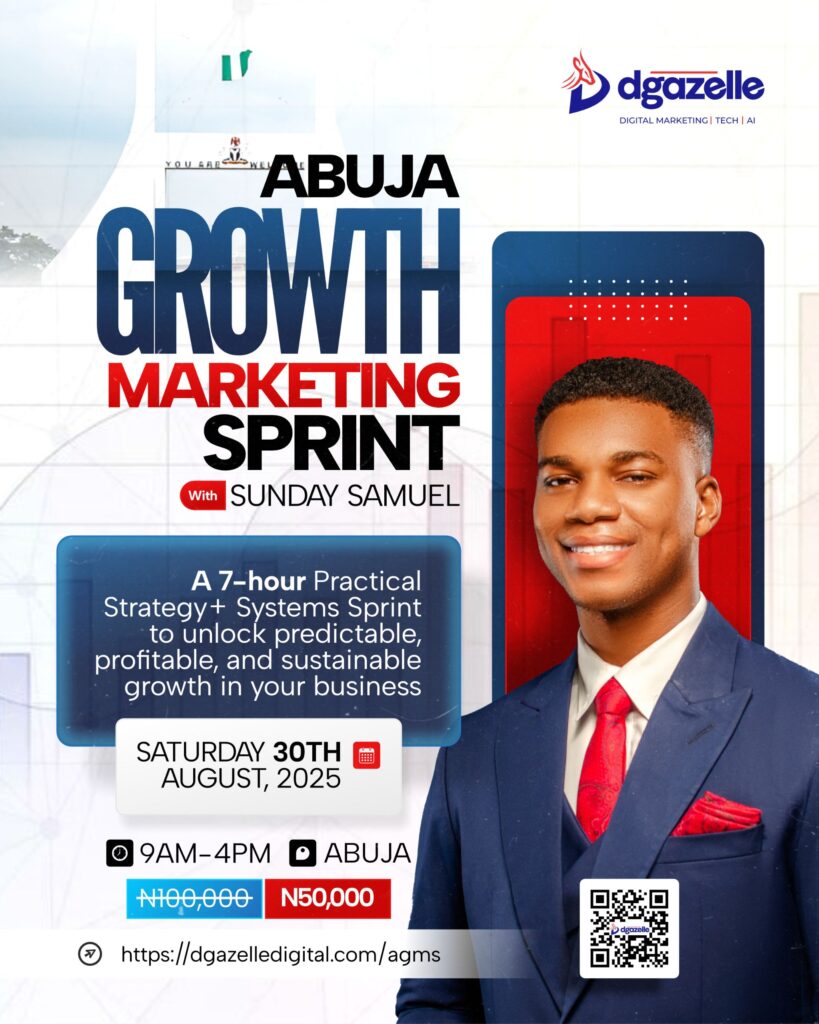The phrase “lead generation campaign” is more than just a catchphrase in the field of digital marketing; it refers to a critical tactic for drawing in new clients and constructing a strong email list. Your target demographic is drawn in by an appealing lead magnet that sounds like a siren song and offers value. This post explores the skill of developing attention-grabbing lead magnets that turn prospects into devoted followers.
Admittedly, not every lead is made equal. Prospective clients who are both financially capable of making a purchase and truly interested in your goods or services are what you need. That’s the point at which B2B lead generating tactics become useful. We’ll look at tried-and-true methods in this article to assist you in luring and developing the best prospects for your company.
Defining Quality Leads
Quality leads are the lifeblood of any successful sales strategy. They’re not just any contacts in your database; they’re prospects with a high likelihood of becoming valuable customers.
A common mistake is confusing quantity with quality. Don’t fall into the trap of chasing after every lead. Focus on those that truly fit your criteria. It’s better to have 10 high-quality leads than 100 low-quality ones. To identify quality leads, use lead scoring systems. Assign points based on demographics, firmographics, and engagement levels. This helps prioritize your efforts on the most promising prospects.
Remember, the definition of a quality lead can vary depending on your business model and industry. Regularly refine your criteria based on your successes and failures. What works for one company might not work for another, so it’s crucial to develop a tailored approach.
Setting out Goals
Developing a comprehensive lead generation strategy begins with setting clear, measurable goals that align with business objectives. By defining SMART goals—specific, measurable, achievable, relevant, and time-bound—you can ensure focus and track progress. For example, a goal might be to “increase qualified leads by 25% in the next quarter.”
It’s essential that these goals support broader company objectives, such as revenue growth or market expansion, and that key performance indicators (KPIs) are established to track metrics like conversion rates and cost per lead. Quality leads should be prioritized over sheer volume to improve the chances of conversion.
Identifying Your Audience
Identifying your target audience is another crucial aspect. This involves creating detailed buyer personas that outline customer demographics, job roles, pain points, and decision-making processes. You should also analyze existing customers to spot patterns and use market research to refine your focus. Audience segmentation is key, enabling you to personalize messaging and marketing strategies.
For sales, consider the entire buying committee, including decision-makers and influencers. Finally, evaluating factors like firmographics and technographics helps tailor solutions to your target market’s needs. Together, these steps build a strong foundation for generating high-quality leads that align with your business goals.
Creating Valuable and Relevant Content
Content marketing plays the major role in generating quality leads. By creating valuable and relevant content, you’ll attract potential customers and establish your company as an industry authority. Focus on addressing your target audience’s pain points and interests through various content types:
- Blog posts: Share industry insights, how-to guides, and thought leadership articles
- Whitepapers: Offer in-depth analysis of industry trends and solutions
- Case studies: Showcase successful client outcomes and problem-solving strategies
- Infographics: Present complex data in visually appealing formats
- Webinars: Host interactive sessions on relevant topics
Consistency is key in content marketing. Develop a content calendar to maintain a steady flow of publications across your chosen platforms. Diversifying your content formats also helps reach a wider audience and cater to various learning preferences, but you should ensure to factor in your audience’s preference and the platform you are sharing it on
By leveraging diverse content formats, you’ll increase your chances of engaging potential leads and guiding them through the sales funnel.
Email list
Lead generation is not complete if there is no email list. By crafting targeted campaigns, you’ll engage potential clients and nurture relationships that drive conversions.
Building a robust email list is the bases for successful lead generation without it, who are you going to market to? Start by offering valuable content in exchange for email addresses on your website. Use lead magnets like whitepapers, eBooks, or industry reports to entice visitors to subscribe. Carry out pop-ups and exit-intent forms to capture leads before they leave your site.
Once you’ve built your list, segment your list base on necessary category like: Industry, Company size, etc. Segmentation allows you to tailor your messages to specific audience groups, increasing relevance and improving open rates. For example, send product updates to existing customers and educational content to new subscribers.
Compelling Email Content
Your email content needs to grab attention and provide value to your audience. Remember to test different email elements, such as subject lines, content, and send times, to optimize your campaigns for better performance. A/B testing helps you identify what resonates best with your audience and refine your approach over time.
You need to create email marketing campaigns that not only generate quality leads but also nurture them through the sales funnel. At Dgazelle, we specialize in crafting compelling email content tailored to your audience, ensuring you drive conversions and achieve business growth.
Choosing the Right Platforms
Social media platforms provide significant opportunities for lead generation by identifying, engaging, and nurturing potential clients, ultimately driving business growth.
Start by researching where your target clients are active. LinkedIn is typically a strong choice, but platforms like Twitter, Facebook, and industry-specific forums shouldn’t be overlooked. Evaluate platform demographics to ensure they match your target audience, and consider industry trends when making your choice. For example, tech companies may thrive on Twitter, while LinkedIn might be more suitable for professional services firms.
Assess content compatibility as well—if your strategy involves videos, platforms like YouTube or TikTok may be worth exploring. Focus on excelling in one or two channels before expanding.
Engaging with Leads
Once the platforms are selected, create valuable content—articles, infographics, and videos that address your audience’s pain points. Use social listening tools to monitor industry discussions and tailor your approach to individual leads. Share social proof, like client testimonials or case studies, to build credibility. Hosting virtual events or webinars can also attract potential leads. Consistent engagement, including quick responses to comments, builds relationships. Utilize targeted ads and influencer partnerships to extend reach.
Remember, social media lead generation isn’t about hard selling. It’s about building relationships, providing value, and positioning yourself as a trusted resource in your industry. With patience and consistency, these efforts will translate into quality leads.
Designing Landing Pages That Convert
Landing pages are important for converting visitors into leads. Create landing pages that grab attention and prompt action. Keep it simple using a clean, uncluttered design that focuses on your offer with a compelling headlines and persuasive copy, do well to include social proof like testimonials and client logos to build trust.
Don’t forget to optimize for mobile, 95.8% of internet users do so with their phones, you do not want a messy landing page to turn away potential leads
Ensure you use clear CTA telling them what you want them to do and for the lead capture forms for collecting valuable information from potential leads, keep it short and use clear labels to make it understandable, lastly enable browser auto fill to fasten the process.
By optimizing your landing pages and implementing effective lead capture forms, you’ll significantly increase your chances of generating high-quality leads through your website.
Measuring and Analyzing Your B2B Lead Generation Efforts
Tracking and analyzing your lead generation efforts is important to understanding what’s working and what’s not. It’s like keeping score in a game – you can’t improve if you don’t know how you’re doing.
Establish key performance indicators (KPIs) that align with your business goals like number of qualified leads generated or cost per lead. Think of KPIs as your lead generation report card. They tell you exactly where you’re excelling and where you need to put in more effort.
Use analytics tools to monitor your lead generation efforts. Google Analytics, HubSpot, and Salesforce are popular options. These tools are like your personal lead generation detectives, helping you uncover valuable insights about your leads’ behavior and preferences.
Perform periodic audits of your lead generation processes. Look for bottlenecks, inefficiencies, or outdated practices. It’s like giving your lead generation machine a tune-up to keep it running smoothly.
Conclusion
Generating quality leads is a multifaceted process that requires a strategic approach. By focusing on aligning content with the buyer’s journey, and leveraging data analytics. Track your KPIs, and regularly audit your strategies to refine your approach. With persistence and a data-driven mindset, you’ll be able to optimize your lead generation efforts and drive sustainable growth for your B2B business. Stay adaptable, experiment with new techniques, and always prioritize delivering value to your potential clients.
GET IN TOUCH
In today’s competitive market, getting high-quality leads into your sales funnel might be difficult. This is a problem that many businesses encounter, but don’t worry—we’ve got you covered!







